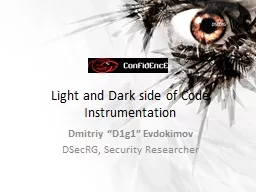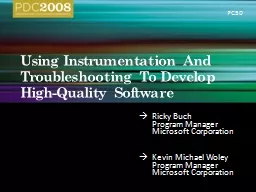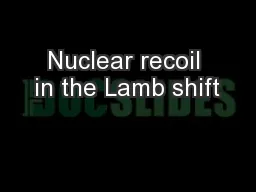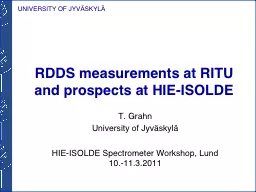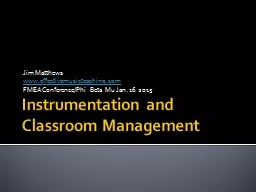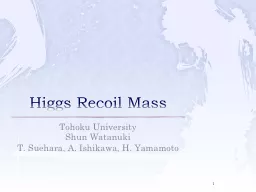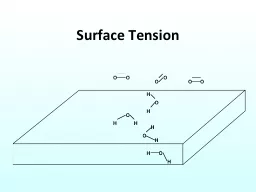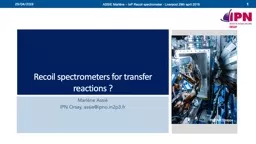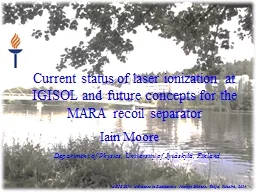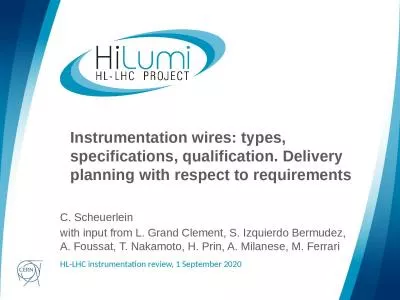PPT-MARA recoil-mass separator at JYFL – status, instrumentation and performance modelling
Author : startlecisco | Published Date : 2020-10-22
Jan Sarén K Auranen M Leino J Partanen J Tuunanen J Uusitalo and RituGamma research group 662013 INPC2013 Firenze Jan Sarén 2 Outline Overview of MARA M ass
Presentation Embed Code
Download Presentation
Download Presentation The PPT/PDF document "MARA recoil-mass separator at JYFL – s..." is the property of its rightful owner. Permission is granted to download and print the materials on this website for personal, non-commercial use only, and to display it on your personal computer provided you do not modify the materials and that you retain all copyright notices contained in the materials. By downloading content from our website, you accept the terms of this agreement.
MARA recoil-mass separator at JYFL – status, instrumentation and performance modelling: Transcript
Download Rules Of Document
"MARA recoil-mass separator at JYFL – status, instrumentation and performance modelling"The content belongs to its owner. You may download and print it for personal use, without modification, and keep all copyright notices. By downloading, you agree to these terms.
Related Documents


